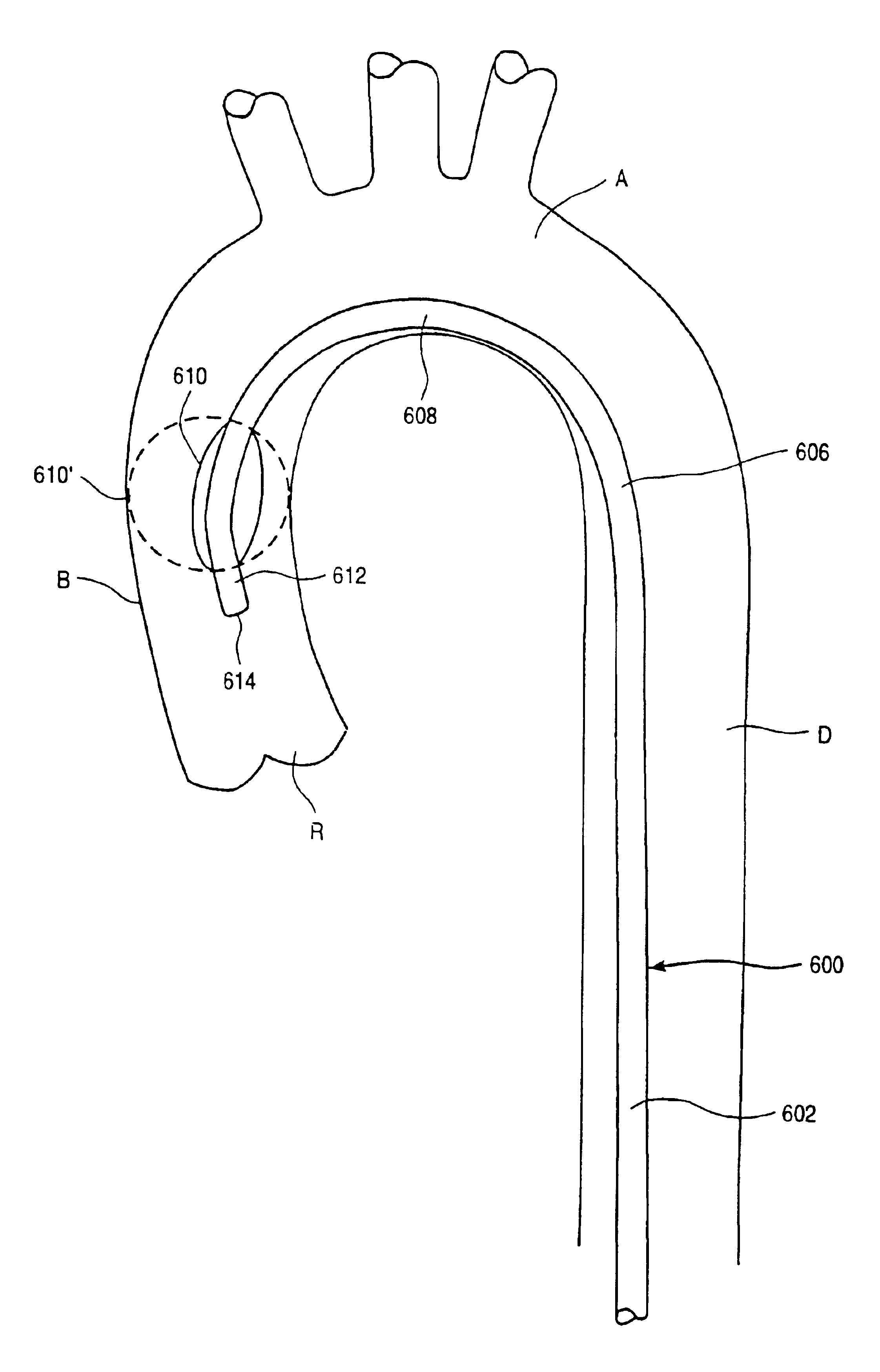Endovascular system for arresting the heart
a heart and endovascular technology, applied in the field of endovascular system for arresting the heart, can solve the problems of significant complications, increased mortality and morbidity for reoperation, and weeks of hospitalization and months of recuperation time, so as to reduce hospitalization and recovery time, reduce mortality and morbidity, and reduce patient suffering
- Summary
- Abstract
- Description
- Claims
- Application Information
AI Technical Summary
Benefits of technology
Problems solved by technology
Method used
Image
Examples
Embodiment Construction
[0122]The invention provides a cardiac access system including an endovascular device for partitioning the ascending aorta, as well as a system for selectively arresting the heart, which are useful in performing a variety of cardiovascular, pulmonary, neurosurgical, and other procedures. The procedures with which the invention will find use include repair or replacement of aortic, mitral, and other heart valves, repair of septal defects, pulmonary thrombectomy, electrophysiological mapping and ablation, coronary artery bypass grafting, angioplasty, atherectomy, treatment of aneurysms, myocardial drilling and revascularization, as well as neurovascular and neurosurgical procedures. The invention is especially useful in conjunction with minimally-invasive cardiac procedures, in that it allows the heart to be arrested and the patient to be placed on cardiopulmonary bypass using only endovascular devices, obviating the need for a thoracotomy or other large incision. Moreover, even in co...
PUM
| Property | Measurement | Unit |
|---|---|---|
| Pressure | aaaaa | aaaaa |
Abstract
Description
Claims
Application Information
 Login to View More
Login to View More - R&D
- Intellectual Property
- Life Sciences
- Materials
- Tech Scout
- Unparalleled Data Quality
- Higher Quality Content
- 60% Fewer Hallucinations
Browse by: Latest US Patents, China's latest patents, Technical Efficacy Thesaurus, Application Domain, Technology Topic, Popular Technical Reports.
© 2025 PatSnap. All rights reserved.Legal|Privacy policy|Modern Slavery Act Transparency Statement|Sitemap|About US| Contact US: help@patsnap.com



